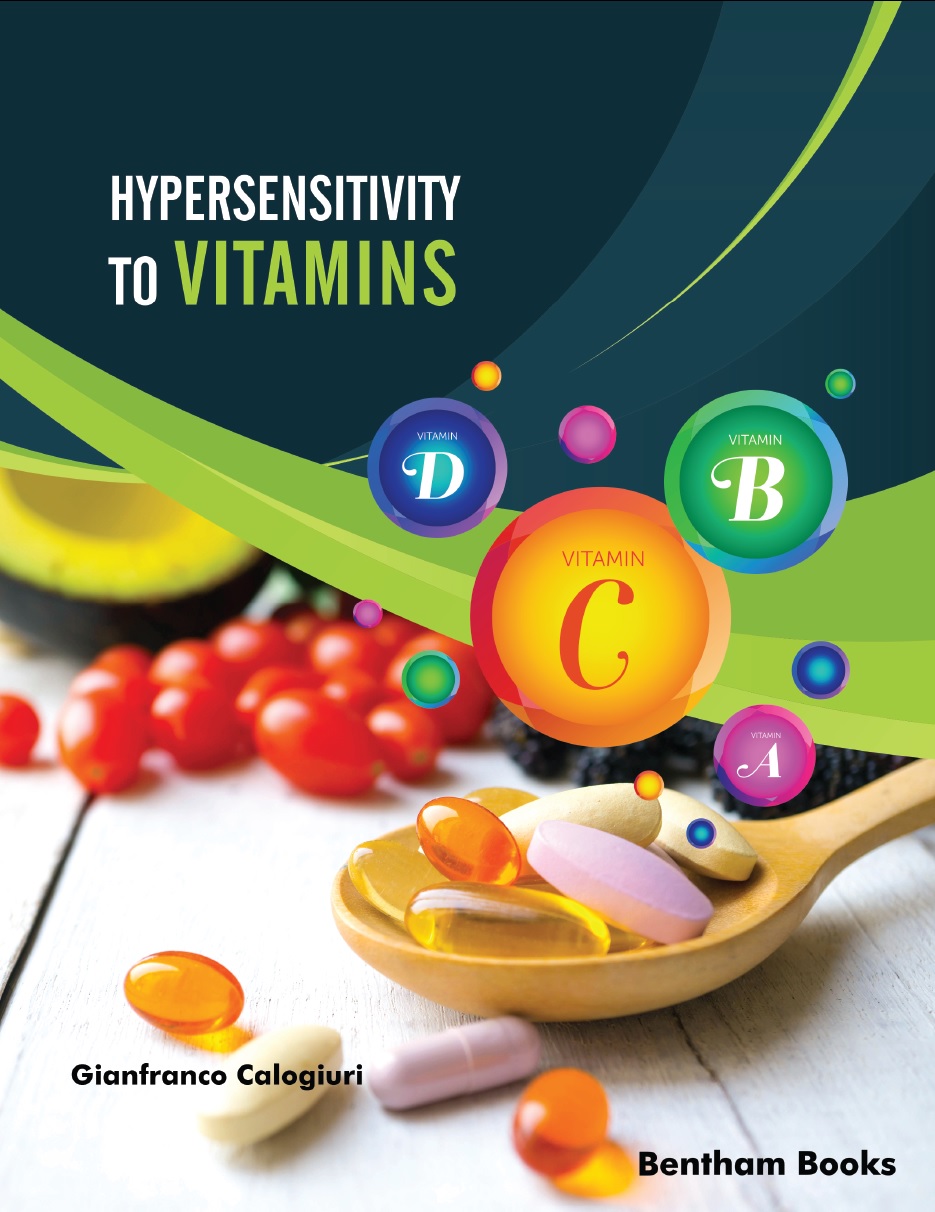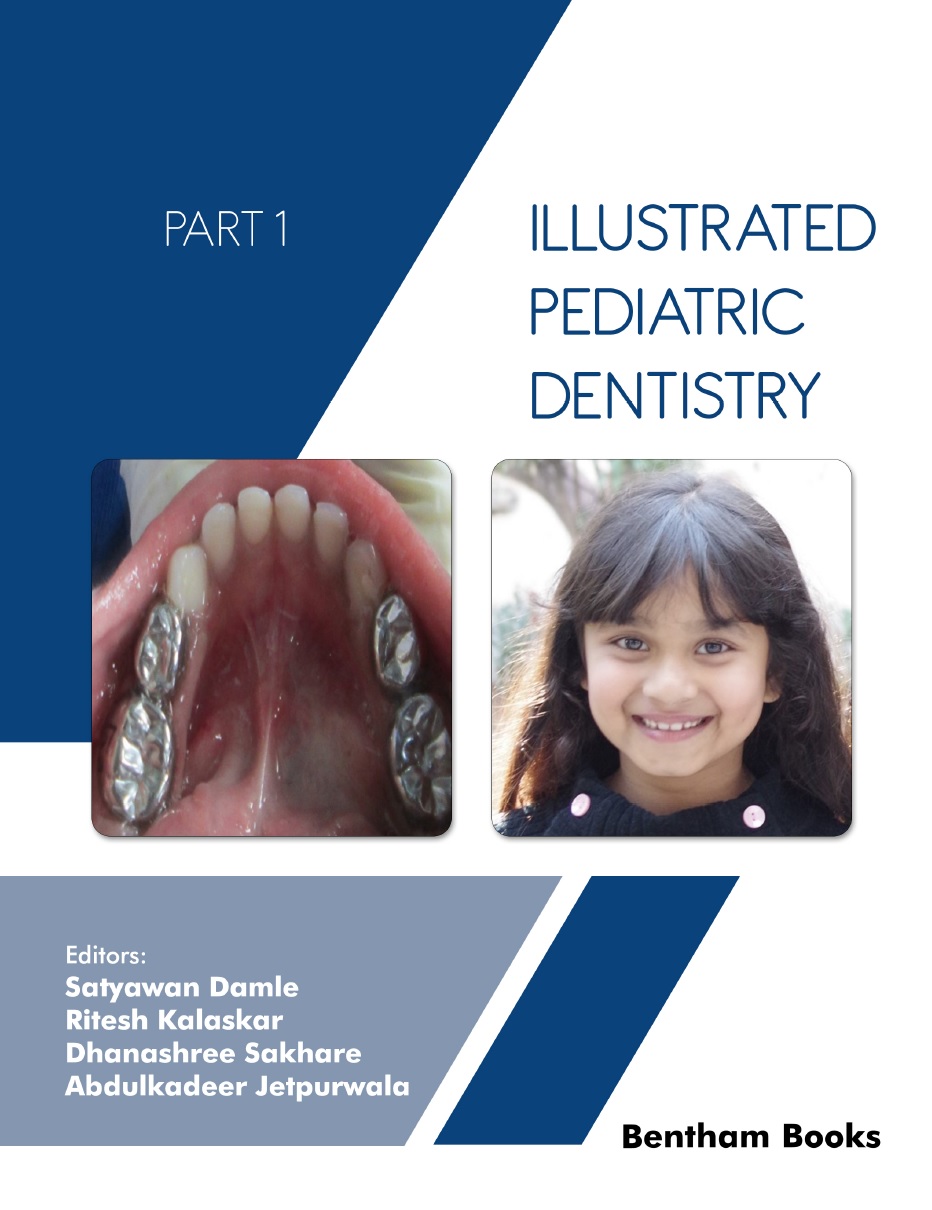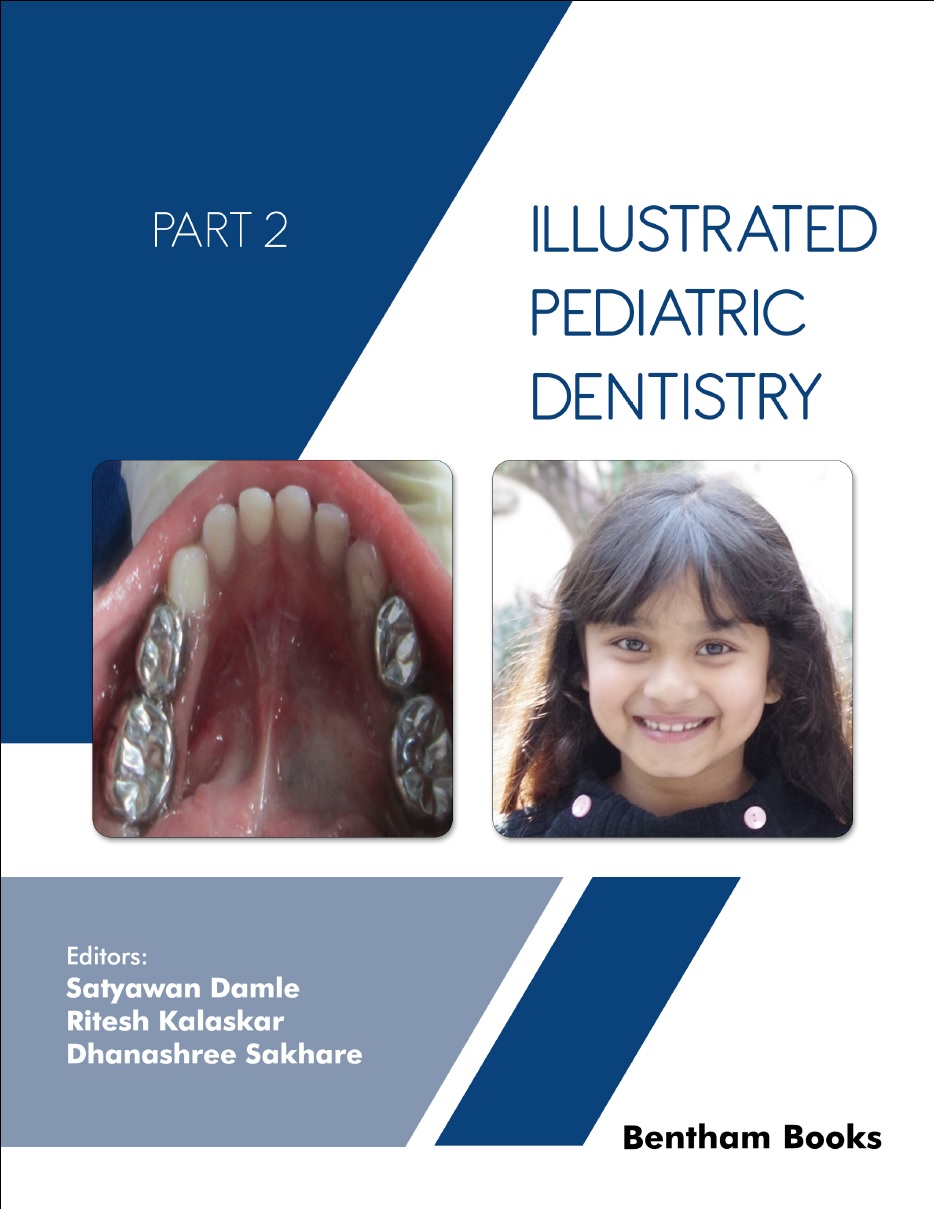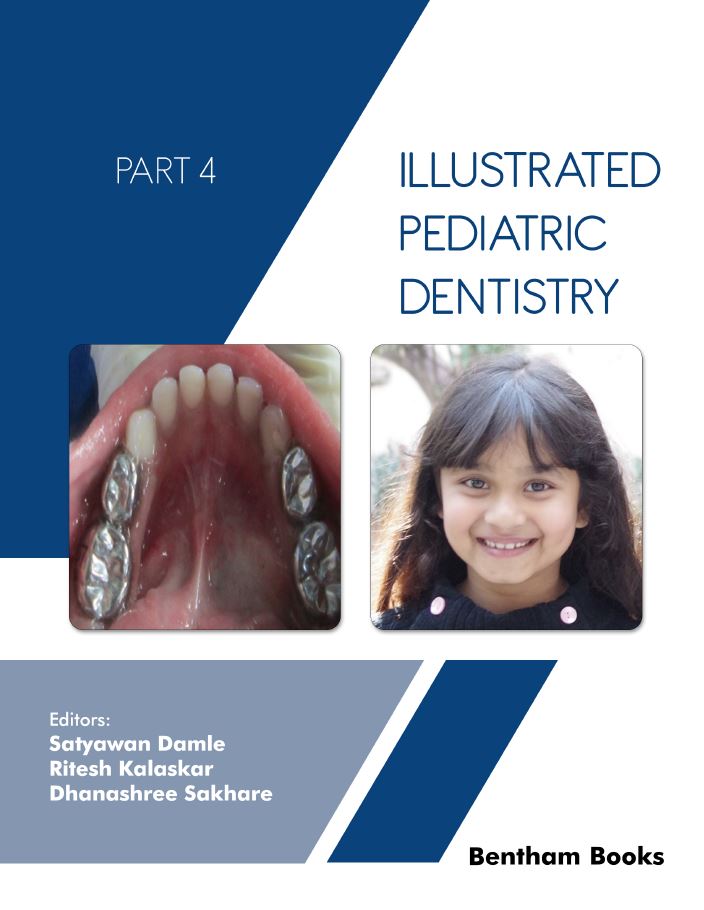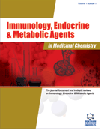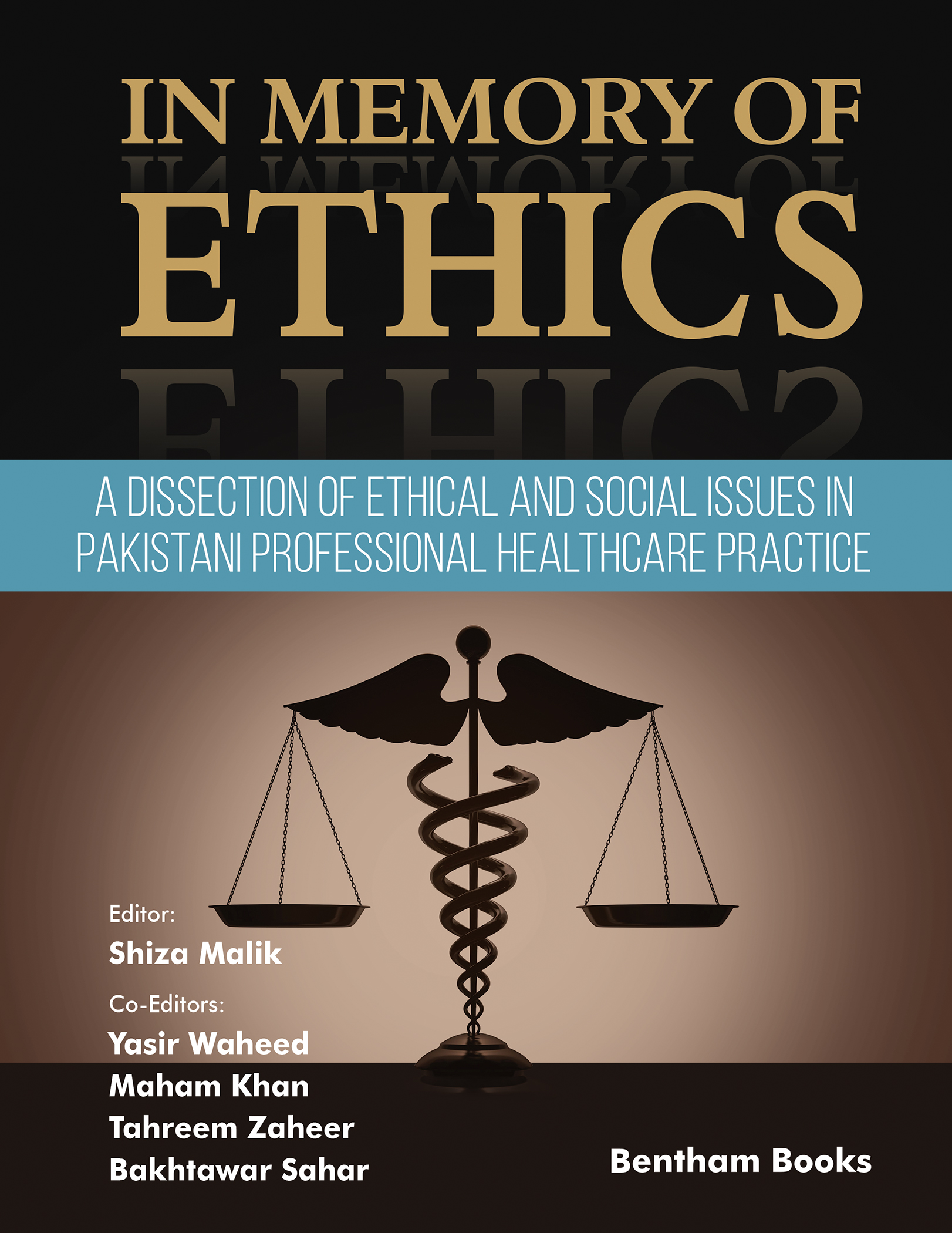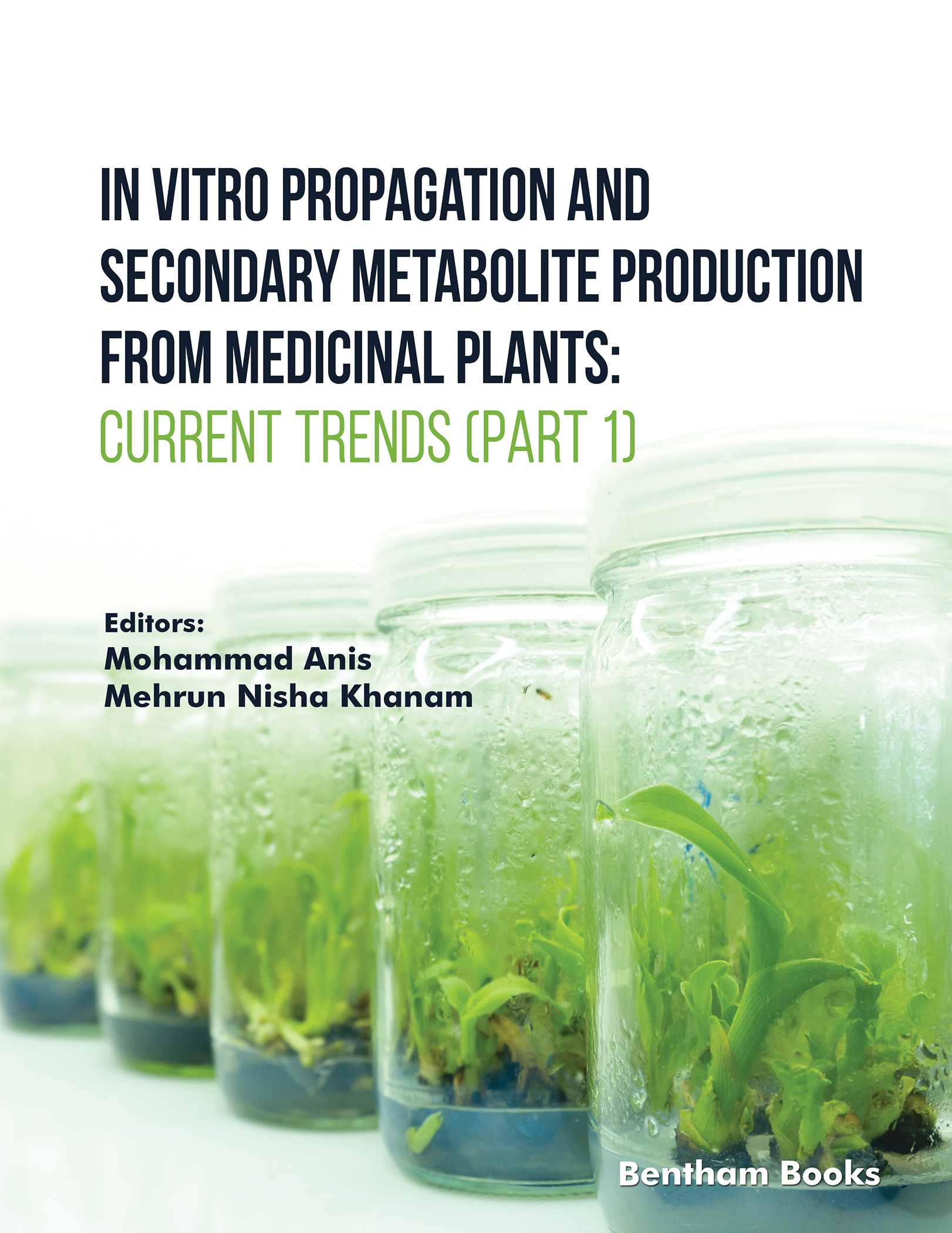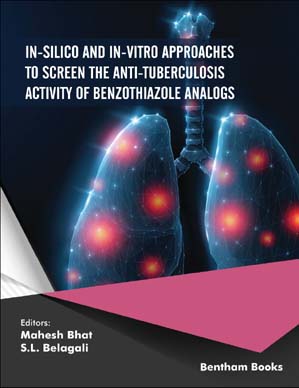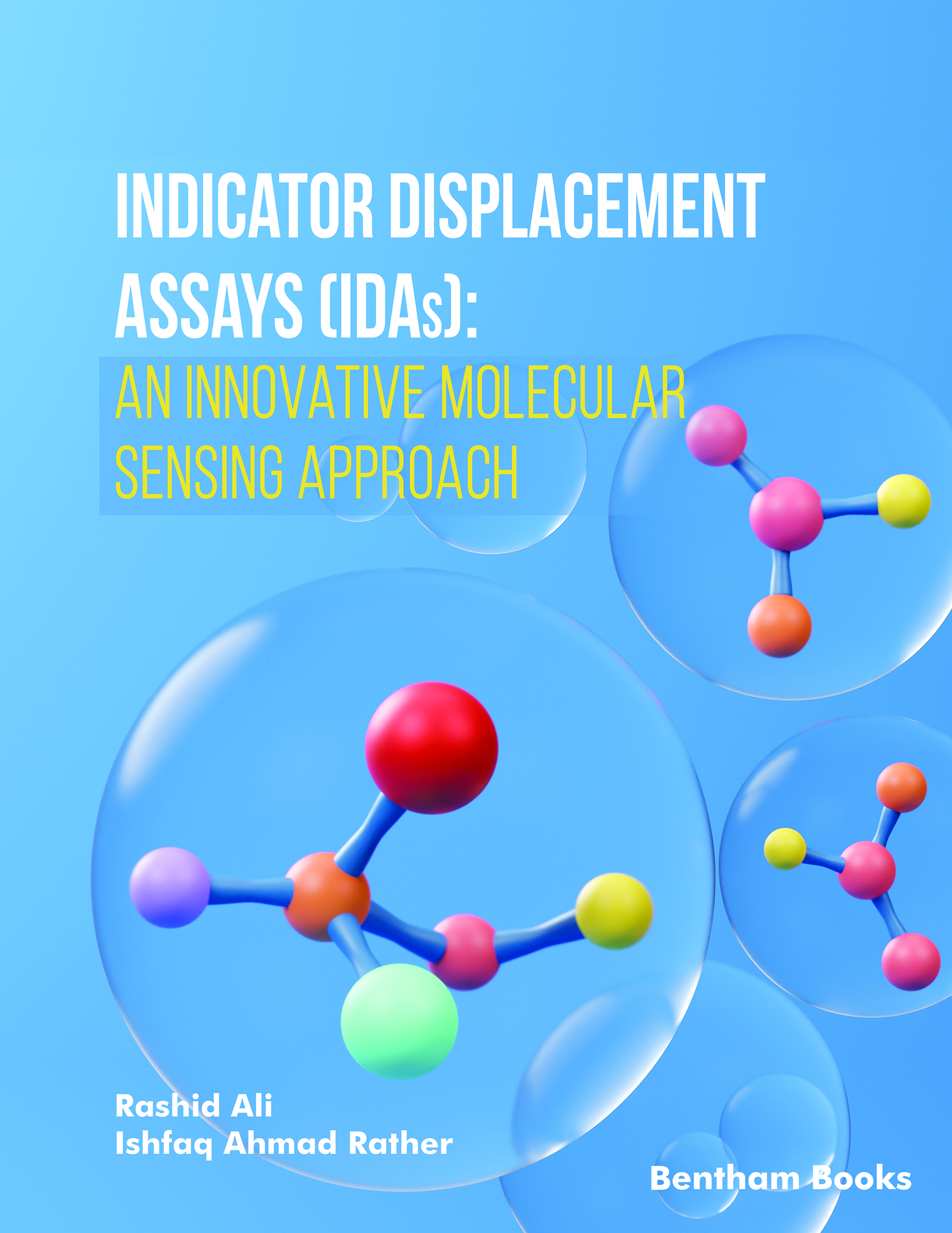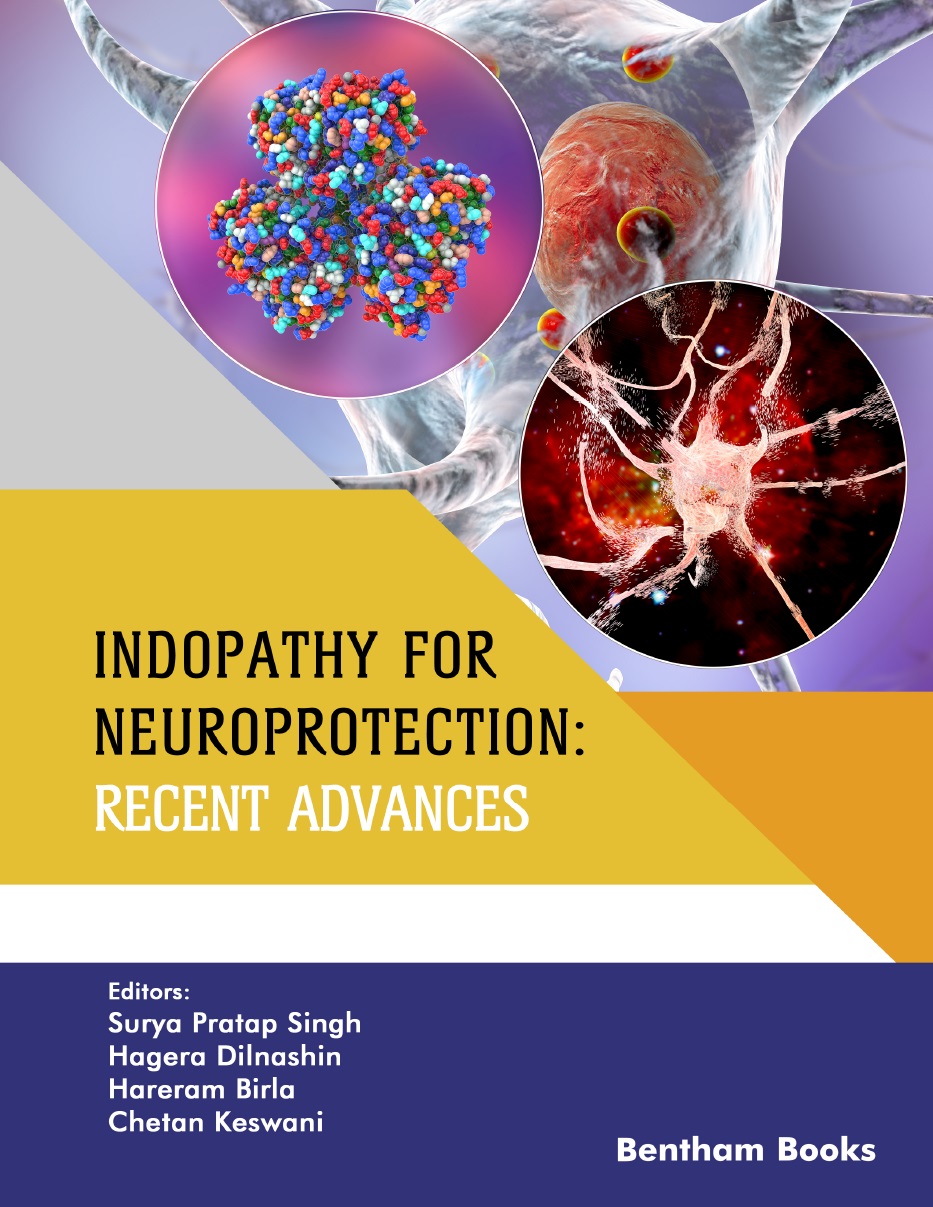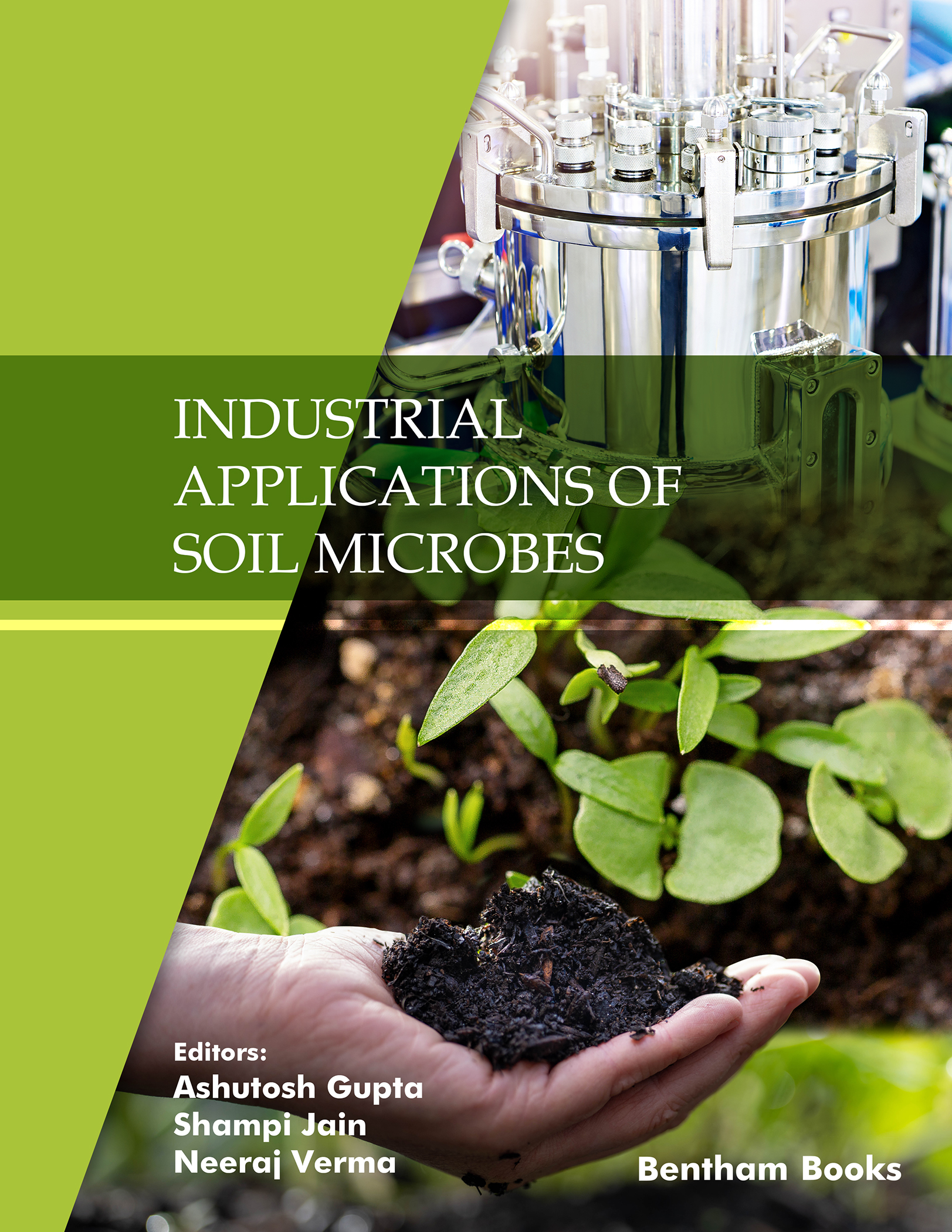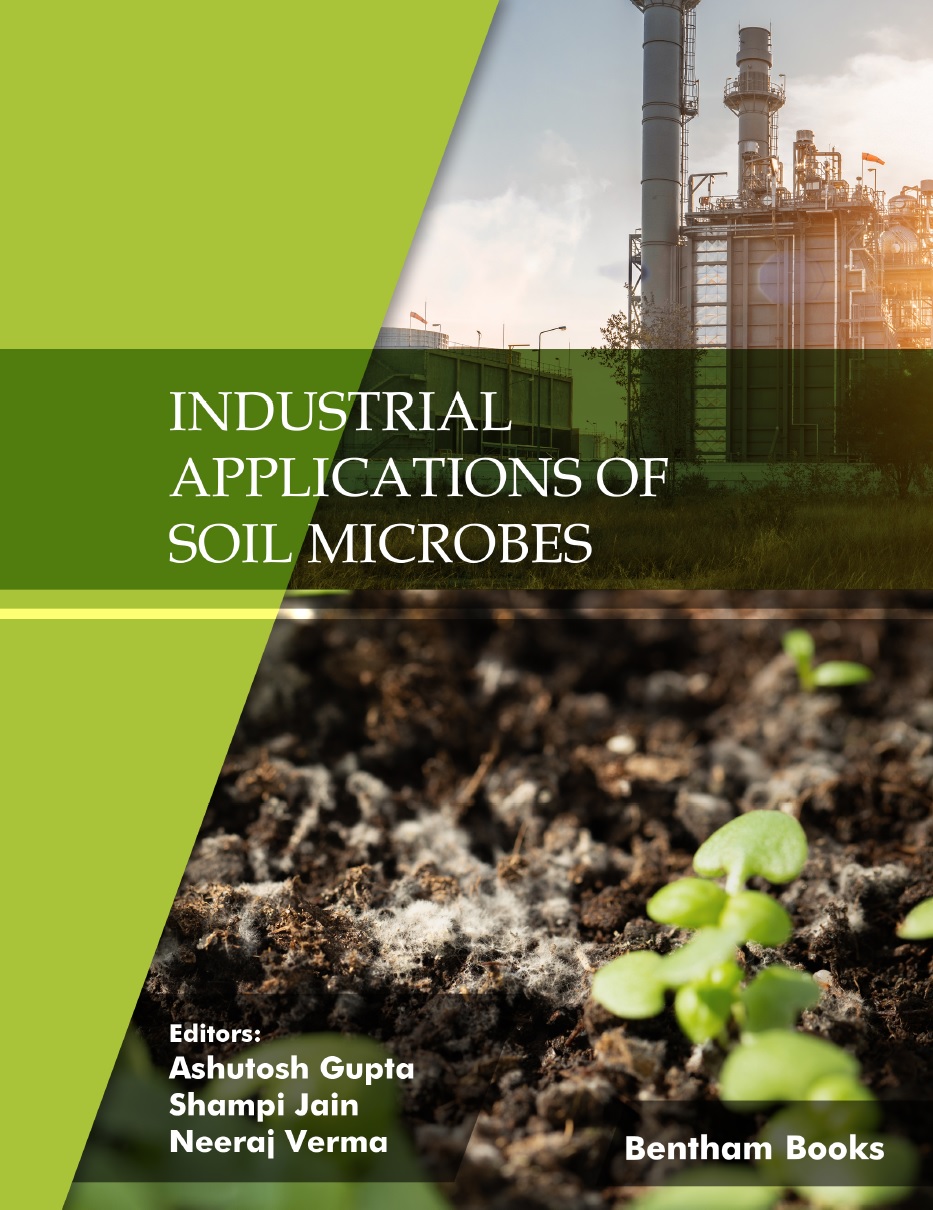- Home
- Publishers
- Bentham Science Publishers
Bentham Science Publishers
Bentham Science Publishers is a major publisher of more than 100 peer-reviewed science, technology and medical (STM) journals, along with a rapidly growing collection of eBooks. Since 1993, Bentham Science Publishers has been catering to the information needs of the pharmaceutical, engineering, biomedical and medical research community.461 - 480 of 839 results
-
-
Hydrotalcite-based Materials: Synthesis, Characterization and Application
More LessHydrotalcite-based materials, characterized by their unique composition are integral to diverse applications in heterogeneous catalysis and beyond. Renowned for their catalytic prowess, these compounds serve as versatile bases for organic reactions, support structures for metal catalysts, and facilitators in organic transformations and water treatment. This comprehensive book introduces readers to hydrotalcite-like compounds, with ten chapters exploring variations in metal ion ratios and interlayer anions, and their impact on properties crucial for industrial applications (ranging from industrial catalysis to medicine).
Key Features
• Detailed exploration of hydrotalcite and hydrotalcite-like compounds
• Recent trends and applications in industrial catalysis, organic synthesis, and environmental remediation
• Hydrotalcite synthesis including methods like coprecipitation, sol-gel processing, and advanced techniques
• Contributions from leading researchers in the field with references
• Comprehensive overview for each topic suitable for both academics and industry professionals
With its exhaustive coverage of hydrotalcite-based materials and their multifaceted applications, this book promises to be an indispensable resource for anyone who wants to understand the utilization of hydrotalcites for advanced catalytic processes.
-
-
-
Hypersensitivity to Vitamins
More LessVitamins are heterogenous bioactive substances required by the human body for its healthy functioning. Vitamins are required through a diet as they are normally not produced by the body. Their deficiency may lead to the development of diseases like scurvy, rickets, pellagra, beri-beri and many others. Vitamins have also been produced synthetically and used in supplements. However, they may induce hypersensitivity reactions, ranging from an allergic contact dermatitis to, urticaria as well as life-threatening anaphylaxis.
Hypersensitivity to Vitamins summarizes knowledge from case reports, studies and investigations on hypersensitivity reactions to all types of vitamins (A, B, C, D, E and K). Chapters explain the identification, diagnosis and management of hypersensitivity reactions to vitamins.
Key Features:
- Provides a general introduction to vitamin allergies
- Covers the major vitamin types: water soluble (B and C) and fat soluble (A, D, E and K) with chapters dedicated to each type
- Provides information about identification, diagnosis and management of the specific hypersensitivity reactions in a clear and concise manner
- Includes a chapter on unusual aspects of vitamin hypersensitivity.
Hypersensitivity to Vitamins is an essential handbook for clinicians, nutritionists and pharmacists who want to quickly access information about vitamin allergies. Students of clinical immunology and pharmacology will also be able to learn about the subject.
-
-
-
Illustrated Pediatric Dentistry - Part 1
More LessIllustrated Pediatric Dentistry is intended to be a guide to undergraduate and postgraduate students in their understanding of pediatric dentistry.
This textbook is modernized with the latest information and techniques in pediatric dentistry. The chapters cover primary pediatric dentistry, its clinical aspects, preventive dentistry, and information about the latest trends in the specialty. The text will equip readers with the knowledge suited to the changing environment of this vital domain.
This textbook's editor has over forty-four years of teaching experience in pediatric dentistry and gives their broad perspective through the book content. This book is also the amalgamation of the thoughts of numerous subject experts of international repute.
Part 1 of this book features information about the developmental psychology of a child, dental caries, craniofacial growth and development, growth of the maxilla and mandible, dentition and occlusion, and oral mucosa.
Key Features:
- The 15, structured chapters keep the latest trends of the subject in mind
- The book content is illustrated with quality clinical images,
- Chapters cover contemporary concepts of problems experienced when treating multiple dental disorders
- The contributions exhibit distinct clinical expertise and the capability of imparting inimitable knowledge to budding professionals
- The book includes modern and current state-of-the-art techniques used in the clinic
- Topic outlines help to quickly review and easily locate content. Also, the Contents of the book are well structured and presented in a very lucid manner, making it easy to understand for students.
-
-
-
Illustrated Pediatric Dentistry - Part 2
More LessIllustrated Pediatric Dentistry is intended to be a text book for enhancing the knowledge and understanding of paediatric dentistry amongst undergraduate and postgraduate students. This textbook is updated with the latest information on techniques employed in paediatric dentistry. Chapters in this part cover primary paediatric dentistry, its clinical aspects, preventive dentistry, and information about the latest trends prevalent in this specialty field of dentistry. The text will equip readers with the knowledge suited to the changing environment of this vital domain. The editor of this textbook has over forty-four years of teaching experience in paediatric dentistry and is able to successfully impart a broad perspective of the subject through the book's contents. This textbook is the amalgamation of the experience and knowledge of various subject experts that command a high international reputation. Part 2 covers orofacial swelling, pediatric space management, interceptive orthodontics and myofunctional therapy, gingival and periodontal diseases, oral hygiene, minimum intervention dentistry (MID), molar incisor hypoplasia (MIH), restorative dentistry, and oral examination and diagnostic aids used in pediatric dentistry. Key Features: - The 15, structured chapters present the latest trends in paediatric dentistry - The book content is illustrated with quality clinical images, - Chapters cover contemporary concepts of problems experienced when treating multiple dental disorders in young patients - Contributions from subject experts present distinct clinical expertise and a unique style of imparting important current knowledge to budding professionals - The book includes modern and current state-of-the-art techniques used in the clinic - Topic outlines throughout the book will greatly help readers to quickly locate and review the content. Contents of the book are very well structured and presented in a lucid manner, making it easy to understand.
-
-
-
Illustrated Pediatric Dentistry - Part 3
More LessIllustrated Pediatric Dentistry is intended to be a guide to undergraduate and postgraduate students in their understanding of pediatric dentistry. This textbook is modernized with the latest information and techniques in pediatric dentistry. The chapters cover primary pediatric dentistry, its clinical aspects, preventive dentistry, and information about the latest trends in the specialty. The text will equip readers with the knowledge suited to the changing environment of this vital domain. This textbook's editor has over forty-four years of teaching experience in pediatric dentistry and gives their broad perspective through the book content. This book is also the amalgamation of the thoughts of numerous subject experts of international repute. Part 3 covers several topics relevant to practical dentistry such as, pediatric crowns, prosthetic management, pental pulp, pediatric endodontics, (including regenerative medicine and instruments), traumatic dental injuries, sports dentistry, Systemic Fluorides, (like SDF) and pit and fissure sealants. Special topics like fental caries vaccine and post-COVID dental practice round up this book. Key Features: - The 18, structured chapters keep the latest trends of the subject in mind - The book content is illustrated with quality clinical images, - Chapters cover contemporary concepts of problems experienced when treating multiple dental disorders - The contributions exhibit distinct clinical expertise and the capability of imparting inimitable knowledge to budding professionals - The book includes modern and current state-of-the-art techniques used in the clinic Topic outlines help to quickly review and easily locate content. Also, the Contents of the book are well structured and presented in a very lucid manner, making it easy to understand for students.
-
-
-
Illustrated Pediatric Dentistry - Part 4
More LessThis textbook presents the latest information and techniques in pediatric dentistry. The chapters cover primary pediatric dentistry, its clinical aspects, preventive dentistry, and information about the latest trends in the specialty. The text will equip readers with the knowledge suited to the changing environment of this vital domain. This textbook's editor has over forty-four years of teaching experience in pediatric dentistry and gives a broad perspective through the book content. This book is also an amalgamation of the knowledge brought forth by numerous subject experts of international repute. Part 4 covers specialized topics for clinical practice that professionals need to understand. The book covers drugs in pediatric dentistry, anesthesia, dental surgery, implants and lasers. Special topics like the management of special needs children and HIV/AIDs patients, new advances and genetics are also covered in this part. Key Features: - The 16, structured chapters keep the latest trends of the subject in mind - The book content is illustrated with quality clinical images - Chapters cover contemporary concepts of problems experienced when treating multiple dental disorders - The contributions exhibit distinct clinical expertise and the capability of imparting inimitable knowledge to budding professionals - The book includes state-of-the-art techniques used in the clinic Topic outlines help to quickly review and easily locate content. Also, the Contents of the book are well structured and presented in a very lucid manner, making it easy to understand for students.
-
-
-
Image Processing in Renewable Energy Resources: Opportunities and Challenges
More LessThis book is a compilation of innovative work on image processing applications for renewable energy systems. The chapters in the book describe the use of neural networks in multi-direction dynamic, topographical data frameworks which are designed to account for the distinctive contemporary issues faced when managing environmentally friendly power generation systems.
The topics covered include uncertainty analysis methods, computing technologies, automated control systems, performance analysis, riverfront analysis through image processing and solar power estimation methods, to name a few. The information is also complemented with a review of problems in the electric power sector in India.
This book is beneficial for professionals and researchers who work on hybrid techniques of GIS, remote sensing, image processing and the implementation of these techniques for utilizing renewable energy resources. Engineers who work on advanced algorithms for renewable energy applications will also get an updated perspective about relevant innovations in this industrial sector.
-
-
-
Immunology, Endocrine & Metabolic Agents in Medicinal Chemistry (Formerly Current Medicinal Chemistry - Immunology, Endocrine and Metabolic Agents)
More LessImmunology, Endocrine & Metabolic Agents in Medicinal Chemistry aims to cover all the latest and outstanding developments in the medicinal chemistry and rational drug design for the discovery of new Immunology, Endocrine & Metabolic Agents. Each issue contains a series of timely in-depth reviews written by leaders in the field covering a range of current topics in Immunology, Endocrine & Metabolic medicinal chemistry.
Immunology, Endocrine & Metabolic Agents in Medicinal Chemistry is an essential journal for every medicinal chemist who wishes to be kept informed and up-to-date with the latest and most important developments in Immunology, Endocrine & Metabolic drug discovery.
-
-
-
In Memory of Ethics: A Dissection of Ethical and Social Issues in Pakistani Professional Healthcare Practice
More LessIn Memory of Ethics: A Dissection of Ethical and Social Issues in Pakistani Professional Healthcare Practice explores the ethical challenges faced within the healthcare sector with a focus on Pakistan. From workplace behaviors to medical procedures, COVID-19 era dilemmas, and broader social health concerns, the book explores the intricate intersection of ethics and healthcare in the region.
The book is divided into five sections. Section I covers topics such as workplace behaviors and ethical conducts while section II covers medical procedures, and patient-doctor relationships. Section III addresses the unique ethical challenges brought forth by the COVID-19 pandemic, including guidelines for therapists and the ethics of mandatory vaccinations. Section IV examines the impact of social media on healthcare, gender discrimination, and the ethical considerations surrounding prisoner rehabilitation. The final section offers insightful essays on ethical and social Issues, covering topics like body shaming, free healthcare, and patient privacy. The editors also explore controversial topics, including euthanasia, abortion, and assisted reproductive technology.
The key feature of this book is that it provides a comprehensive coverage of diverse ethical dilemmas in healthcare. Furthermore, it is an attempt to give a subjective understanding of healthcare ethics through thought-provoking essays shedding light on contemporary ethical issues in a Pakistani context. The contributors have incorporated real-world examples and case studies to illustrate ethical principles in action.
In Memory of Ethics: A Dissection of Ethical and Social Issues in Pakistani Professional Healthcare Practice book is essential reading for anyone interested in understanding complex ethical and social issues and promoting integrity in healthcare practices.
-
-
-
In Vitro Propagation and Secondary Metabolite Production from Medicinal Plants: Current Trends (Part 1)
More LessThis book is a comprehensive review of secondary metabolite production from plant tissue culture. The editors have compiled 12 meticulously organized chapters that provide the relevant theoretical and practical frameworks in this subject using empirical research findings. The goal of the book is to explain the rationale behind in vitro production of secondary metabolites from some important medicinal plants. Biotechnological strategies like metabolic engineering and the biosynthesis, transport and modulation of important secondary metabolites are explained along with research studies on specific plants. In addition to the benefits of secondary metabolites, the book also aims to highlight the commercial value of medicinal plants for pharmaceutical and healthcare ventures. Topics covered in this part include: 1. Elicitation Strategies and Metabolic Engineering to boost metabolite production with case studies in metabolic engineering with examples of Scaevola Taccada and Catharanthus Roseus. 2. Stress response investigation and the role of glandular trichomes as bio-cell factories 3. Plant growth regulators and rapid regeneration techniques using swift plantlets regeneration and phytochemical characterization 4. Nutraceuticals, antimicrobials, and genomic applications of in vitro cultures with an example of Hassawi rice and its genomics 5. Sustainable approaches for saving endangered medicinal plants The book caters to a wide readership. It primarily prepares graduate students, researchers, biotechnologists, giving them a grasp of the key methodologies in the secondary metabolite production. It is a secondary reference for support executives, industry professionals, and policymakers at corporate and government levels to understand the importance of plant tissue culture and maximizing its impact in the herbal industry.
-
-
-
In Vitro Propagation and Secondary Metabolite Production from Medicinal Plants: Current Trends (Part 2)
More LessThis book is a comprehensive review of secondary metabolite production from plant tissue culture. The editors have compiled 12 meticulously organized chapters that provide the relevant theoretical and practical frameworks in this subject using empirical research findings. The goal of the book is to explain the rationale behind in vitro production of secondary metabolites from some important medicinal plants. Biotechnological strategies like metabolic engineering and the biosynthesis, transport and modulation of important secondary metabolites are explained along with research studies on specific plants. In addition to the benefits of secondary metabolites, the book also aims to highlight the commercial value of medicinal plants for pharmaceutical and healthcare ventures.
Topics covered in this part include:
1. In vitro propagation and tissue culture for several plants including Withania somnifera (L.) Dunal, Aloe vera, Oroxylum indicum (L) Kurz, Ocimum basilicum L, Rhubarb, Tea, and many others (including plants in Northern India).
2. Genetic Improvement of Pelargonium
3. Bioactive Components in Senna alata L. Roxb
4. Plant tissue culture techniques
The book caters to a wide readership. It primarily prepares graduate students, researchers, biotechnologists, giving them a grasp of the key methodologies in the secondary metabolite production. It is a secondary reference for support executives, industry professionals, and policymakers at corporate and government levels to understand the importance of plant tissue culture and maximizing its impact in the herbal industry.
-
-
-
In-Silico and In-Vitro Approaches to Screen the Antituberculosis Activity of Benzothiazole Analogs
More LessThis monograph presents information about the history and evolution of tuberculosis treatment, and the potential of the benzothiazole moiety for anti-tuberculosis (anti-TB) activity. The book introduces the reader to basic information about benzothiazole as a drug candidate before delving into the anti-tubercular properties of derivative compounds in subsequent chapters. The contributors explain quantitative structural-activity relationships of benzothiazole with anti-TB activity along with the importance of in-silico (computer aided) techniques in the drug design process. This is followed by a chapter which details Mycobacterium tuberculosis biology, strains as well as symptoms of tuberculosis infections. The book then explains in-vitro and in-vivo methods used to evaluate drug efficacy against tuberculosis along with the synthesis and anti-TB activity of the benzothiazole derivatives (benzothiazole diamide, benzothiazole guanidinyl derivatives and benzothiazole conjugated pyrazole derivatives).
This book, therefore, is a quick reference on TB diseases, methods of in-silico and in-vitro screening of anti-TB drugs and the importance of the benzothiazole in TB treatment regimens. The book is suitable for readers, researchers and post graduate students who are interested in general tuberculosis drug design, screening and discovery, as well as the application of benzothiazole as an anti-TB drug.
-
-
-
Indicator Displacement Assays (IDAs): An Innovative Molecular Sensing Approach
More LessThis book explores a revolutionary sensing technique called Indicator Displacement Assays (IDAs). It is designed to provide readers with a comprehensive understanding of the conceptual foundation and wide-ranging applications of IDAs. The book aims to fulfill a crucial gap in the existing references on the subject.
The content starts by explaining fundamental concepts, design strategies, and the scope of IDAs. Subsequent chapters elaborate on the intricate molecular recognition of various analytes, offering insights into sensing mechanisms for cationic, anionic, and neutral molecules. The design and construction of colorimetric, fluorescence, and metal complexing IDAs are also thoroughly explored in later chapters, followed by recent extensions of IDAs, including enantioselective indicator displacement assays, intramolecular indicator displacement assays, reaction-based indicator displacement assays, and more. Innovative applications of IDAs, such as sensory arrays and electrochemical sensors, are also discussed in detail, providing a comprehensive understanding of their conceptual foundations and practical implementations.
The book is a primer on IDAs for researchers who want to understand the fundamentals of the technique, as well as postgraduate students aiming to specialize in supramolecular and analytical chemistry.
-
-
-
Indopathy for Neuroprotection: Recent Advances
More LessDegenerative nerve diseases are age-related, progressive and cause irreversible neurological loss that may lead to death. Chronic diseases like amyotrophic lateral sclerosis, Huntington's disease, Alzheimer's disease, and Parkinson's disease are associated with insoluble protein depositions and pose serious health challenges that may intensify in the coming decades. Current therapies only help to alleviate some of the physical or mental symptoms associated with neurodegenerative diseases, although there is currently no remedy for slow disease progression. In recent years, attempts have been made to discover a mechanism for neurodegenerative diseases and prospective treatment that may help mitigate aging effects and prevent these diseases. Natural products have been a constant source of new approaches for the treatment of neurodegenerative diseases, in particular plant alkaloids and polyphenolic compounds.
Indopathy for Neuroprotection: Recent Advances highlights herbal treatments that are preferred over conventional treatments in some regions. Book chapters focus on the effects of various medicinal plants that have shown promise in reversing pathological symptoms of neurodegenerative disease and highlight the neuroprotective role of medicinal herbal phytochemicals and their mechanism of action. The book serves as a reference for pharmacology and herbal medicine scholars as well as healthcare workers interested in information about alternative and complementary therapies for neurological disorders.
-
-
-
Induction Motor Computer Models in Three-Phase Stator Reference Frames: A Technical Handbook
More LessThis book is a compilation of knowledge about computer models in the three-phase stator reference frame. Chapters explore several aspects of the topic and build upon research previously presented by contributors. The book aims to provide interesting solutions to problems encountered in the design of railway and analysis in railway motors. The modeling approaches proposed by the authors in this book may become an incentive for readers and researchers to develop their lifehacks to solve new problems in induction motor design and testing.
Key topics presented in the book:
- Approximate calculations of induction motor equivalent T-shaped circuit parameters with the use of catalogue data
- Simulations of different types of shaft load, including fluid coupling
- Receiving static characteristics of an electric machine during simulation by means of dynamic model
- Simulation of the electric drives specific applications with three-phase induction motors building
- Direct start of an induction motor as part of an auxiliary drive of an AC electric locomotive, containing a capacitor phase splitter, starting with different types of shaft loads (fan or compressor).
Special attention has been given to the description of the thermal model of an induction motor with a squirrel-cage rotor, which makes it possible to simulate operating modes when powered by an unbalanced voltage, as well as with squirrel cage defects. The thermal model is presented as a detailed superstructure to the model of electromechanical processes of an induction electric machine.
Other key features of the book include references for further reading, an appendix for the parameters of the equivalent thermal circuit of an NVA-55 induction motor.
The material presented in the book is of interest to railway motor engineers, specialists in electromechanics and electric drives who use SPICE-compatible CAD applications in their work.
-
-
-
Industrial Applications of Polymer Composites
Frontiers in Polymer Science: Volume 1
More LessThis volume is a comprehensive guide to the industrial use of polymer composites. Edited contributions demonstrate the application of these materials for different industrial sectors. The book covers the benefits, future potential, and manufacturing techniques of different types of polymers. Contributors also address challenges in using nanopolymers in these industries. Readers will find valuable insights into the current demand and supply of polymer composites and future scope for research and development in this field of polymer science. The volume presents seven chapters, each exploring a different application of polymer composites. Chapter 1 discusses the use of polymer additives for improving classical concrete and the workability and durability of polymer composite concrete. Chapter 2 explores the use of polymer nanocomposites in packaging, including smart/intelligent packaging, modified atmosphere packaging, and vacuum packaging. Chapter 3 delves into the use of polymer composites in tissue engineering, including manufacturing techniques and various applications. Chapter 4 explores energy storage applications for polymer composites, while Chapter 5 discusses their use in microbial fuel cells. Chapter 6 explores the use of carbon nanotubes in polymer composite gas sensors. Finally, Chapter 7 discusses the use of polymer composites in automotive applications. This is an ideal reference for researchers, scientists, engineers, and professionals in the fields of materials science, polymer science, engineering, and nanotechnology. The content is also suitable for graduate and postgraduate students studying industrial manufacturing.
-
-
-
Industrial Applications of Soil Microbes
More LessThis volume is a compilation of reviews on the industrial usage of soil microorganisms. The contents include 16 brief reviews on different soil microbe assisted industrial processes. Readers will be updated about recent applications of soil bacteria, fungi and algae in sectors such as agriculture, biotechnology, environmental management.
The reviews also cover special topics like sustainable agriculture, biodiversity, ecology, and intellectual property rights of patented strains, giving a broad perspective on industrial applications of soil microbes.
Volume 3 emphasizes various soil microorganisms including cyanobacteria and mycorrhiza. The 16 chapters cover the ecological significance of mycorrhiza to and their role in sustainable agriculture, microbial interactions with nematodes, microbes as biocontrol agents, and the use of endophytes in agriculture, Chapters also shed light on industrial aspects and microbial biotransformation, providing a comprehensive view of sustainable agricultural practices. Special topics such as the microbial carotenoids are also included.
-
-
-
Industrial Applications of Soil Microbes: Volume 1
More LessThis volume is a compilation of reviews on the industrial usage of soil microorganisms. The contents include 15 brief reviews on different soil microbe assisted industrial processes. Readers will be updated about recent applications of soil bacteria, fungi and algae in sectors such as agriculture, biotechnology, environmental management.
The reviews also cover special topics like sustainable agriculture, biodiversity, ecology, and intellectual property rights of patented strains, giving a broad perspective on industrial applications of soil microbes. The text is easy to understand for readers of all levels, with references provided for the benefit of advanced readers.
-
-
-
Industrial Applications of Soil Microbes: Volume 2
More LessThis volume is a compilation of reviews on the industrial usage of soil microorganisms. The contents include 16 brief reviews on different soil microbe assisted industrial processes. Readers will be updated about recent applications of soil bacteria, fungi and algae in sectors such as agriculture, biotechnology, environmental management.
The reviews also cover special topics like sustainable agriculture, biodiversity, ecology, and intellectual property rights of patented strains, giving a broad perspective on industrial applications of soil microbes.
Volume 2 includes reviews on destructive microbes like Macrophomina Phaseolina, eco-friendly microbes like Beauveria Bassiana, the identification of fungi in the rhizosphere, the industrial application of Trichoderma, and other topics. The text is easy to understand for readers of all levels, with references provided for the benefit of advanced readers.
-
-
-
Infectious Diseases
Herbal Medicine: Back to the Future: Volume 6
More LessHerbal Medicine: Back to the Future compiles expert reviews on the application of herbal medicines (including Ayurveda, Chinese traditional medicines and alternative therapies) to treat different ailments. The book series demonstrates the use of sophisticated methods to understand traditional medicine, while providing readers a glimpse into the future of herbal medicine.
This volume presents reviews of plant based therapies useful for treating different infectious diseases. The reviews highlight different sources of antiviral, antibacterial and antifungal herbs. The volume concludes with a review on the therapeutic potential of herbs for treating rheumatoid arthritis. The chapters included in this volume are as follows:
- Brazilian Siparuna species as a Source of antiviral agents
- Antimicrobial and antifungal potential of Indian spices
- Role of herbal medicines in the treatment of infectious diseases
- Herbal medicine: traditional approach to treat infectious diseases
- Exploring the therapeutic potential of medicinal plants for rheumatoid arthritis
This volume is essential reading for all researchers in the field of natural product chemistry and pharmacology. Medical professionals involved in internal medicine who seek to improve their knowledge about herbal medicine and alternative therapies for tropical and other infectious diseases will also benefit from the contents of the volume.
-


